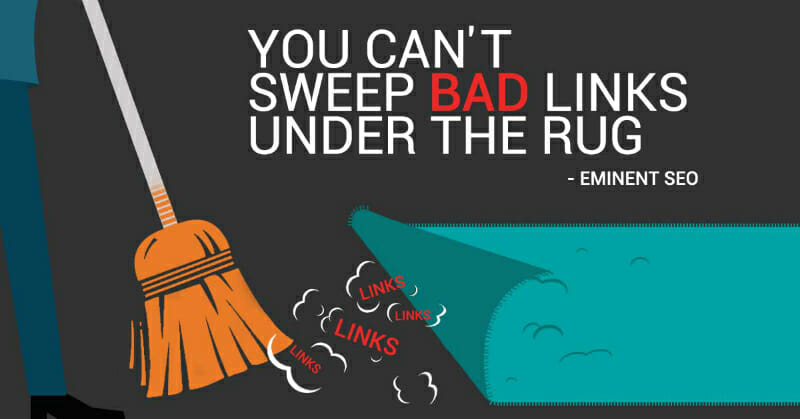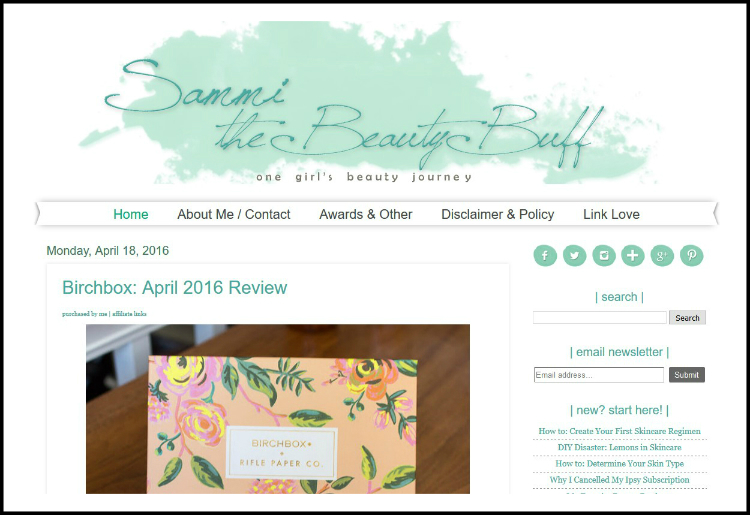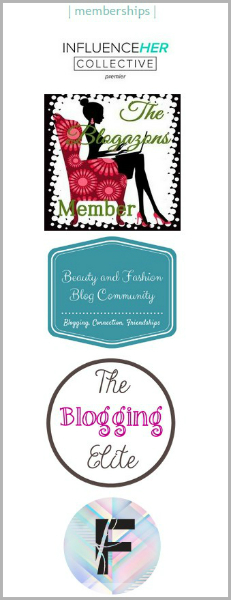Earlier this month, several reports stated that Google started issuing a specific warning to various webmasters. The message hit at one miscue: “unnatural” outbound links.
Google reportedly first started sending this message out on Saturday, April 9, via email and Google Search Console. While it probably took some webmasters aback, others likely knew they had it coming.
In either scenario, the webmaster is going to have to make some clear changes before submitting a “reconsideration request” to Google in order to get his or her rankings back.
Let’s look further at the heart of the issue plus what the best practices are when it comes to outbound linking.
What the Outbound Link Warning Said
Google warned certain webmasters that it detected a “pattern” of outbound links that is “either unnatural or irrelevant,” violating the search engine’s Webmaster Guidelines. Therefore, the search engine applied a “manual spam action” to the website in question.
Google added that the unnatural links it detected appear to be trying to “artificially boost” other sites’ search engine rankings. Basically, to Google, it looked like the sites that were flagged were trying to pass so-called link juice to other websites, among other suspicious practices.
How Webmasters Were Directed to Fix It
Google’s stern warning about outbound links was essentially a penalty upon the sites that were flagged. Receiving a penalty either hurts a website’s search rankings or kills them altogether. The penalty won’t be lifted until Google does a manual review of the site.
For the websites that received this latest warning, the webmasters behind them were directed to either manually remove the links in question or add “nofollow” tags to each one. The piece of code for asking search engine crawlers to not follow a link, if you’re wondering, is rel=”nofollow”. Once the webmaster has sufficiently addressed the outbound linking issue, Google advised sending a reconsideration request.
What Is an Outbound Link?
Just to be clear about what an outbound link is, it’s any clickable link that takes the user to an external website, which is why it’s also called an external link.
In today’s SEO climate, it’s recommended to be very judicious about how frequently you include an outbound link on your website. Any link (internal or external) that you don’t add “nofollow” to will be taken into account by search engine crawlers, making it a “dofollow” link, effectively.
If you’re linking to a low-quality website, a dofollow link could actually hurt your SEO value. Also, too many links (whether internal or external) could lower the search rankings potential of that particular webpage. Therefore, it’s best to use nofollow tags every so often when you’ve got a webpage with an abundance of links and/or if you’re linking to sites with low domain authority.
When Google issues a manual spam action on a website, it can apply to either a site-wide match or a partial match. A site-wide match means Google detected an issue on every page of a website, likely in a sidebar, the header or the footer. A partial match means the issue applied to just a single webpage or a certain set of pages on the site in question.
How Certain Websites Ran into This Issue
For quite some time, a common website practice was to link to several other websites either through text or images placed on a sidebar or in the footer of a page. Granted, this was never an SEO best practice, but some webmasters did this either as a partnership with other websites or because they simply liked those sites and wanted to give a subtle shout-out to them.
These type of links could often be paid for as kind of a one-way means of drawing some SEO power from an authoritative website. In other cases, the two sites linked to each other in a type of affiliate marketing scheme.
Today, this practice is going by the wayside, and Google may have just delivered it its final blow with the recent penalization of sites with unnatural outbound links. For a good example, let’s look at the website behind the screenshot that seemingly every media site is featuring when reporting on Google’s outbound link warning: SammiTheBeautyBuff.com.
While nothing looks amiss when you first land on the homepage, if you scroll just a little ways down, you’ll see a right sidebar that features several logos that link to other websites – all under a section called “Memberships.” Inside each review, there are also several product links (or that may have been for undisclosed free samples – but more on that point later). At first glance, this area may be what earned the website a penalty from Google.
The webmaster of this beauty products blog must have gotten the message, because if you dig into the source code of the homepage, these are all nofollow links. If they weren’t before, they are now.
Say Goodbye to Blogrolls
If you used WordPress to create a personal blog in the past, you were practically encouraged to add a blogroll to your site. Also known as a links menu, a blogroll is a way to list other blogs and sites you find valuable or that are relevant to your specific blog. The blogroll can be easily added using a widget in WordPress, and it will show up in the footer or sidebar of your blog or website, depending on the theme you use.
Here’s an example of a blogroll in somebody’s sidebar, without calling out the site that is using it:
WordPress itself still has a support page that talks all about the blogroll, but given the direction of Google’s search algorithm, it’s likely this feature is going to be de-emphasized or abandoned in the near future.
WordPress is far from the only content management system or website builder that features a blogroll option. But, no matter which content management system you use, a blogroll or links menu is a feature you’re going to want to ignore going forward – if you care at all about search rankings.
A More Recent Development: Penalties for Exchanging Links for Free Products
After Google started issuing outbound link warnings, the tech giant eventually clarified why it was handing out penalties. According to Search Engine Land, the penalty appeared to be targeting free product reviews. This is because companies that provide product reviewers free merchandise are often looking for a dofollow link from the reviewer’s website to theirs.
So, Google has effectively put the kibosh on this practice. Can product reviewers still receive free stuff and write about it on their blog or website? Certainly. Google just asks that they disclose when they receive free items and then nofollow any links to the company that provided the product. This explains why the aforementioned Sammi “The Beauty Buff” was called out by Google earlier this month.
If, in fact, only free product reviews were the target of Google’s recent penalties, then most of these penalties would likely be classified as partial matches. An individual product review is generally going to take up only one webpage, rather than resulting in a site-wide external link just for the free item(s) provided.
Did Google’s Recent Warning Apply to Inbound Links?
Barry Schwartz of Search Engine Land reported that he only saw a “few inbound link notification penalties” on the weekend when Google started warning certain webmasters of unnatural outbound links.
So, for the most part, websites weren’t getting penalized for having another site link to them, no matter how spammy or irrelevant the backlink appears to be. Instead, the sites hosting such a suspicious link are the ones that primarily landed on Google’s radar.
What to Do About Your Outbound Links
Even if you’re not a product reviewer, now is as good a time as any to review your website’s outbound links, since Google will certainly continue to target suspicious linking practices.
If your website has a static, site-wide sidebar, are there any external links featured? You can ask the same about the footer. It’s time to nofollow those links or contemplate if they even need to be there in the first place.
Other than those areas, you can also go through some of the individual pages of the site and the blog to see if there’s any area where someone happened to link to a plethora of external sites. You need to go in and nofollow most of those links, if they aren’t already, and consider if each and every link is even helpful for the user in the first place. If not, remove as necessary.
If your website has a partnership with another in the form of a dofollow site-wide link to theirs, tell them that current SEO best practices call for you to get rid of the link. Or, perhaps, you can compromise with them and turn it into a nofollow link – and maybe decrease the number of pages it shows up on.
Are ‘Nofollow’ Links Still Helpful?
Perhaps your site has scored a link on an authoritative website, but their webmaster wants to remove it in light of recent SEO events. See if they can just nofollow the link to your site instead.
Yes, the link juice goes away when someone adds a nofollow tag, but that doesn’t mean the link can’t still have value in a different way. If the hosting site draws tons and tons of visitors, some of them are eventually going to see and click the link to your domain, resulting in increased traffic for you. The number of clicks on your link per visitor is probably going to be pretty small, but it’s still better to give them that option than to not have it there at all, right?
But What if I’m Linking Back and Forth Between Several Interconnected Sites?
If you have a main website and a few microsites, or just several “sister” sites, it doesn’t hurt to feature links to all related sites in the footer of each one of the properties. Google is pretty savvy at understanding when sites are related. You don’t even have to nofollow the links in this case.
However, if we’re talking about dozens of websites, no matter how well they go together, you should avoid interlinking them, even with nofollow tags. In a 2014 Search Engine Watch article, Google engineer and video personality Matt Cutts was quoted as recommending only up to five links in the footer to other related websites. He added that if you operate 50 to 100 related websites and are thinking about interlinking them all, don’t do it – or, at best, only link to the four or five most relevant sister sites.
Internal and External Linking Strategies with Eminent SEO
Need help with evaluating which links to remove from your site and then actually getting it done? Eminent SEO can clean up not only your outbound linking strategy, but we can optimize your site’s internal linking strategy as well. We also can remove and disavow spammy or low-quality links that lead to your site, as well as help you recover from any search engine penalties you may have suffered.
We have been helping clients with their internal and outbound linking strategies for more than 11 years, and we’ve been updating our processes with every step of Google’s evolution. To learn more about optimizing your website with proper linking practices, contact Eminent SEO today at 800.871.4130.







Should we remove doubtful outbound links from the site or to nofollow it?
Good question. It depends on the page the link shows up. If the page already has a ton of outbound links on it, you should remove any questionable ones. (You can still name your source but not link to it.) If the link in question is helpful to the user then, yes, keep the link and nofollow it. Or, if you’re linking to a strong, reputable site, then you shouldn’t even have to nofollow the link in the first place. Just be judicious about how many links you feature on a page and which one are worth keeping the default “dofollow” tag.
Actually no matter if someone doesn’t know then its up to other users that they will assist,
so here it occurs.